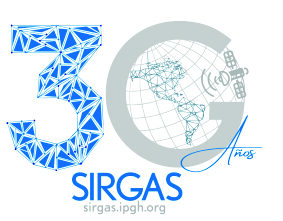SIRGAS was initially realized by two GPS campaigns, one in 1995 (SIRGAS95) with 58 stations, and one in 2000 (SIRGAS2000) with 184 stations. Today, SIRGAS is realized by a network of continuously operating GNSS stations with precisely known positions (referred to an specific reference epoch) and their changes with time (station velocities). This SIRGAS Continuously Operating Network (SIRGAS-CON) is currently composed by about 500 permanently operating GNSS sites distributed over the Americas and the Caribbean. The operational performance of SIRGAS-CON is based on the contribution of more than 50 organizations, which install and operate the permanent stations and voluntarily provide the tracking data for the weekly processing of the network. Since more and more Latin American countries are qualifying their national reference frames by installing GNSS continuously operating stations and these stations shall be consistently integrated into the continental reference frame, the SIRGAS-CON network comprises:
- One core network (SIRGAS-C), primary densification of ITRF in the Americas and the Caribbean, with a good continental coverage and stable site locations to ensure high long-term stability of the reference frame.
- National reference networks (SIRGAS-N) improving the densification of the core network and providing accessibility to the reference frame at national and local levels. Both, the core network and the national networks satisfy the same characteristics and quality; and each station is processed by three analysis centres.
The SIRGAS-C network is processed by the IGS RNAAC SIRGAS (i.e. DGFI-TUM, Germany). The SIRGAS-N national networks are computed by the SIRGAS Local Processing Centres: CEPGE (Ecuador), IBGE (Brazil), IGAC (Colombia), IGM-Cl (Chile), IGN-Ar (Argentina), INEGI (Mexico), IGM-Uy (Uruguay) and USC (Chile). These processing centres deliver loosely constrained weekly solutions for the SIRGAS-N national networks, which are combined with the SIRGAS-C core network to get homogeneous precision for station positions and velocities. The processing strategy guarantees that each regional SIRGAS-CON station is included in three individual solutions. The SIRGAS Combination Centres are IBGE and the IGS RNAAC SIRGAS (DGFI-TUM).
The main SIRGAS-CON products are: loosely constrained weekly station positions in SINEX format to be included in the IGS polyhedron solutions and for the computation of mult-year solutions; weekly positions aligned to the ITRF for applications in the Americas and the Caribbean; and multi-year (cumulative) solutions (positions + velocities) for practical and scientific applications requiring time depending positioning. The weekly positions are especially useful when strong earthquakes cause co-seismic displacements or strong relaxation motions at the SIRGAS stations disabling the use of previous coordinates. The multi-year solutions provide the most accurate and up-to-date SIRGAS station positions and velocities. They are used for the realization and maintenance of the SIRGAS reference frame between two releases of the ITRF. While a new ITRF release is published more or less every five years, the SIRGAS reference frame multi-year solutions are updated every one or two years.
